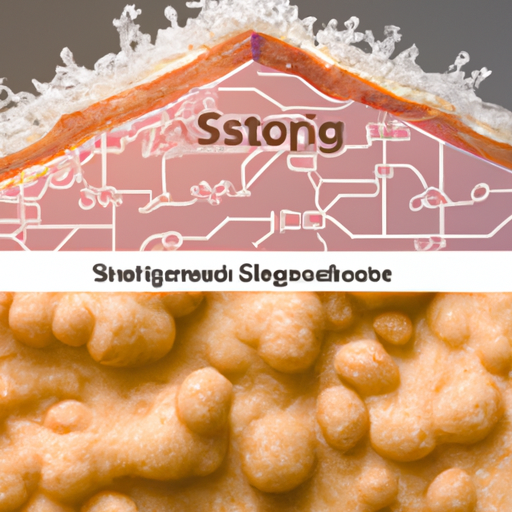Starch vs Glycogen:Starch can be defined as a polysaccharide that is composed of several glucose atoms that are joined together to form one huge mass. It is mostly produced by plants and then stored in the form of food for the purposes of energy generation. Starch is primarily stored in fruits and seeds in plants. Glycogen, on the other hand is a polysaccharide that is mainly found in animals, bacteria and fungi. In animals, it is mainly stored in the liver and skeletal tissues.
So What is the Major Structural Difference between Starch and Glycogen?
1. Mass
Starch is smaller in mass compared to glycogen: This is because glycogen has a longer chain compared to starch which makes the molecules that connect it have a larger mass when the molar mass is calculated. Starch is a shorter polysaccharide, therefore, having a smaller molar mass compared to glycogen.
2. Formation
Starch is formed and found in all green plants: Starch is primarily formed in green plants in the form of colorless granules of round shapes. The basic raw materials that are needed for the formation of starch are sunlight, water and carbon dioxide. Glycogen on the hand, is formed within the animal tissues and is then stored in the liver. The formation of glycogen is dependent on the level of insulin in the body. Higher insulin levels translates to higher glycogen levels.
3. Production
Starch is a polymeric carbohydrate made up of glucose joined together: The glucose components of starch are produced during photosynthesis where plants use light, water and carbon dioxide. Glycogen is produced from glucose where glucose is converted to glycogen when the insulin levels are high which indicates that the body has excess glucose and thus it is stored. Unlike starch, glycogen is produced by conversion of glucose in animal tissues.
4. Storage
Glycogen forms are long term energy reserves: Glycogen is stored in adipose tissues and primarily in the cells of the liver and skeletal muscles. In the liver, glycogen makes about 5 – 6 percent of the organ’s weight. The concentration of glycogen is less. in the skeletal muscles compared to the liver, The amount of glycogen stored in the body depends on the basal metabolic rate of the animal. Starch is stored in plant cells called amyloplast found in seeds and fruits.
5. Purpose
The main purpose of glycogen in the body is to maintain constant levels of glucose in the blood which provides energy in the tissues: This is facilitated by the level of insulin in the body. High levels of insulin indicate low levels of glucose and thus the glycogen polymer is converted into glucose in response to glucagon. Starch in plants is stored due to the production of excess sugars. In animals, starch is broken down to monomer components known as glucose and then converted into complex polymers known as glycogen.
6. Presence
Starch is present in green plants while glycogen is present in animals: Starch is found in plants as stored complex polymer composed of interconnected glucose atoms. It is mainly stored in the seeds, fruits and some of its traces found in the leaves. With animals, glycogen is stored mainly in the liver, skeletal muscles and in the blood. The presence of glycogen in animals ensures a continuous flow of energy to facilitate the normal working of the body.
7. Molecules
The simplest form of starch is amylose: The polysaccharide is formed by glucose joined by glycosidic bonds making the following molecular formula (C_6 H_10 O_5)_n H_2 O. It consists of two types of molecules, the linear and helical amylose and branched amylopectin. The molecular formula of glycogen is C_24 H_42O_21 which represents its structure. It is composed of many glucose atoms which are connected by bonds to make up the complete structure of glycogen.
8. Solubility
glycogen has more free water molecules because of the –OH group which makes it soluble in water: Starch has fewer water molecules due to less –OH group thus making starch hygroscopic. This makes starch to not be soluble in water.
9. Bond
In starch, the glucose monomers are connected by glycosidic bonds: This combines the glucose molecules to form starch. The bond connects one glucose atom to the fourth carbon atom in the adjacent glucose. These long chains of glucose bonding in plants form starch. Glycogen has a structure that branches frequently which makes the difference between the two visible as per the bond.
10. Shape
Starch granules are mostly spherical in shape: They mostly form hexagonal shapes when focused on their molecular shape. They are found mostly in the endosperm of the plant’s seeds. Glycogen is found in random irregular shapes. This characteristic is able to differentiate the two polysaccharides using their structural shape and compounds.


